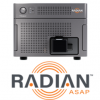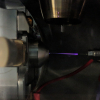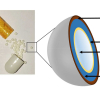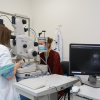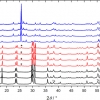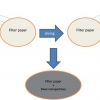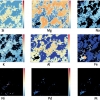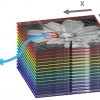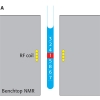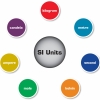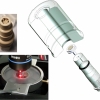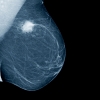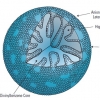This sponsored article describes the RADIAN ASAP, a dedicated direct analysis system, which uses Atmospheric Pressure Solids Analysis Probe (ASAP) technology to analyze solids, liquids and solutions.
Spectroscopy Articles
Pages
The authors have developed the “GlowFlow” mass spectrometry source design based on an Argon flowing glow-discharge that can be retrofitted to existing instrumentation and ionise compounds at atmospheric pressure which are less amenable to ESI.
Once tablets and capsules have been removed from their original packing (which they often have to be), the possibility of certain identification is lost and mixups can happen. The authors have developed a database containing physical information about tablets/capsules and, crucially, ATR/FT-IR spectra. The spectra are usually able to narrow down the “prediction” to the correct medicine.
Eyes may or may not be the window into our souls, but it does seem that they are the window into our brains. This article explains how hyperspectral imaging (HSI) and optical coherence tomography (OCT) can be used to image the retina to diagnose Alzheimer’s Disease. The results are processed by machine learning and give the best performance when HSI and OCT data are combined.
Roman concrete is well known and has lasted well. Now, it seems that the Egyptians used concrete to build at least some of their pyramids. Guy Demortier reports that PIGE and PIXE analyses have revealed the presence of carbon clusters in the material used to build the Khufu (Great) pyramid at Giza. This fits with a model of construction in which the blocks were cast in situ rather than cut out of stone and somehow moved into place. There’s always something new to be learnt!
Holger Gibhardt, Fabian Ziegler and Götz Eckold tell us about the use of Raman spectroscopy to understand complex electric and magnetic interactions in multiferroic ionic crystals. Multiferroics are a relatively new class of materials that exhibit magnetic and electrical ordering simultaneously. Both phenomena are coupled so that electric forces may be used to control the magnetic structure and vice versa. Raman enables understanding of the underlying processes on the atomic level, essential for the development of new materials with these properties.
Surface-enhanced Raman spectroscopy for selected energetic material detection is the topic of Mohamed Mokhtar, Tamer Wafy and Mahmoud Abdelhafiz. They have investigated various approaches to improve the SERS response of explosive materials and have come up with a simpler, one-step method for the detection of natural, solid TNT.
Whether it is looking at geological samples to exploit potential mineral deposits, identifying the provenance of gemstones or exploring the surface of Mars, LIBS has proven to be a valuable technique. The ability to take the instrument into the field with the development of handheld spectrometers has only enhanced its utility.
What should we be calling the various types of spectral imaging? The authors lay out some suggestions and welcome your views.
The SensorFINT COST Action is a European Network for assuring food integrity using non-destructive spectral sensors.
This article describes a clever adaptation to benchtop NMR experiments that allows the collection of multiple scans (to produce high signal-to-noise ratios) without the time penalties involved.
Cultural heritage is a growing application area for spectroscopy, and our second article describes how infrared and X-ray spectroscopy are being used to explore the coatings used by the old Cremonese makers that produced such outstanding sound.
Mike Sargent gives an overview of traceability in atomic spectroscopy. He explains the background, as well as more specialised areas such as inductively-coupled plasma mass spectrometry (ICP-MS).
Mark McDowall, Meetings Secretary of The British Mass Spectrometry Societ,y explains how the society coped with the restrictions of COVID and what his views are for the future of events.
How did a major trade show organiser cope with the disruption of COVID-19? Susanne Grödl, Exhibition Director of analytica for Messe München, gives her experience.
A look at recent advances in the use of Raman spectroscopy in the nuclear industry.
Over the last two decades, significant advances in technology and new methodologies have made proteomics an extremely powerful tool for protein scientists, biologists and clinical researchers. Increase in the data produced also creates new challenges for bioinformatics software development.
This article sets out to demonstrate the accurate determination of elemental impurities, especially As, in vitamin B12 according to USP chapter <233>.
This article reports the use of near infrared (NIR) spectroscopy for the diagnosis of human breast cancer using tissue sections similar to those used by pathologists.
For the separation of ionic species, ion chromatography (IC), a type of liquid chromatography, is the method of choice. The most critical component of this technique is the separation column, which is selected based on factors that include the specific analytes of interest, the sample type and the required detection levels. This article outlines the column parameters that impact the separation of charged species in solution using ion-exchange chromatography and the developments that have continued to redefine what is possible with an IC system.

